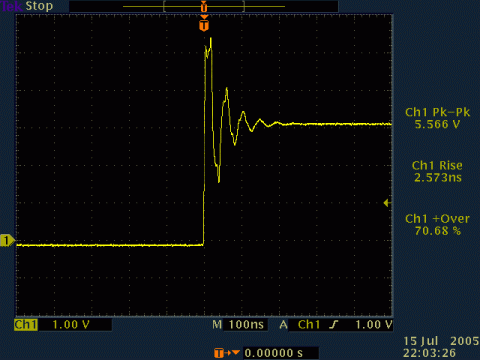
15-July-2005
After more than a decade of Oncore-series GPS receivers Motorola recently announced the end of the line. The following is a first look at one possible replacement: the Resolution-T GPS timing receiver by Trimble. The board is almost as tiny as the M12+ and the specs promise 15 ns (1 σ) 1PPS accuracy. Worth a look, I'd say.
Trimble sells the Resolution-T as a cheap PCB ($75) or as an expensive development kit. If you don't need results as soon as you open the box and if know the right end of a soldering iron then there's little need to buy the full development kit. Here's the Resolution-T Datasheet.
Below are photos of the dev kit:
// photos //
And photos of the plain OEM GPS board:
// photos //
The evaluation kit delivers a single buffered(?) 1PPS output to DE9S pin 9 of PORT2. The waveform appears excellent.
Below; with 1M termination at 100 ns/div scale (note large ringing overshoot):

Below; with 1M termination but at 10 ns/div (at least the risetime looks good):
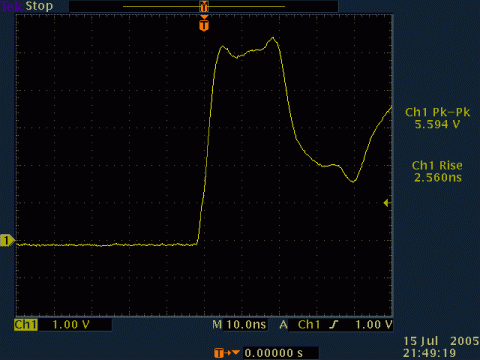
Below; with 50R termination at 10 ns/div (much better looking; very fine signal):
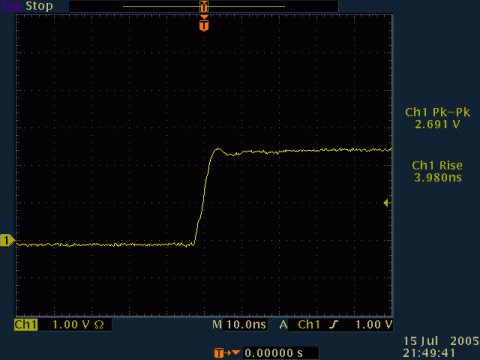
With no termination of the 1PPS signal, the rise-time is about 2.5 ns -- but this is partly due to the excessive overshoot (70%). The waveform at 1M looks suspicious enough that it is probably safer to use 50R termination on this output.
With 50R termination a 1.0 VDC TIC (Time Interval Counter) trigger level is ideal for the clean 2.5 V signal and the measured rise-time is 4 ns. Very nice.
Trimble offers a Windows application to set and query the operation of the Resolution-T. Or you can be a real man and do it over 9600-8-O-1 RS-232 using their TSIP protocol.
Everything you need to change or monitor is here. Below are some sample screen-shots of DSPmon:
Version info:
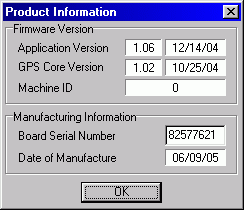
Main screen (now you know where to visit my lab)::
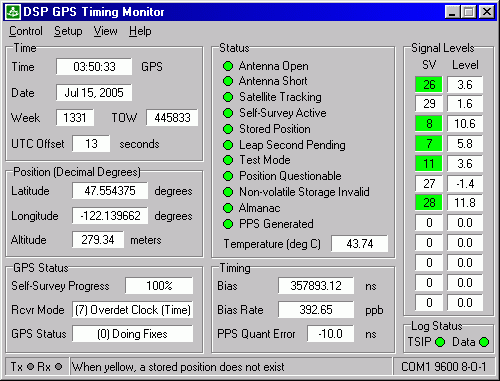
Data logging configuration (including sawtooth data from TIC over GPIB):
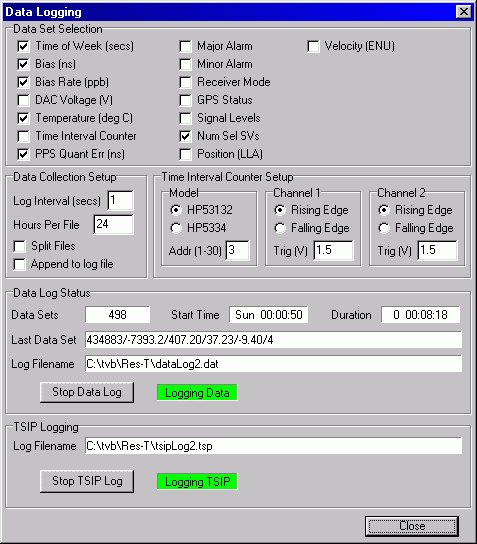
Raw GPS measurement window:
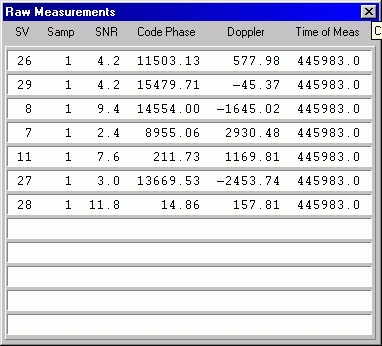
Satellite tracking data (note 0.1 degree resolution):
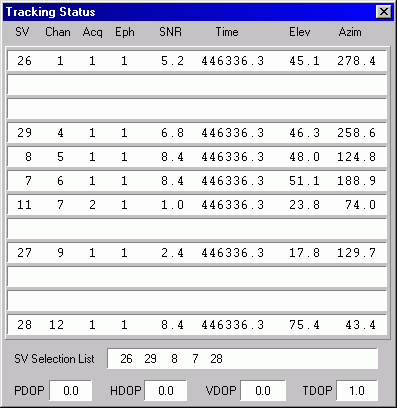
TSIP I/O packet trace:
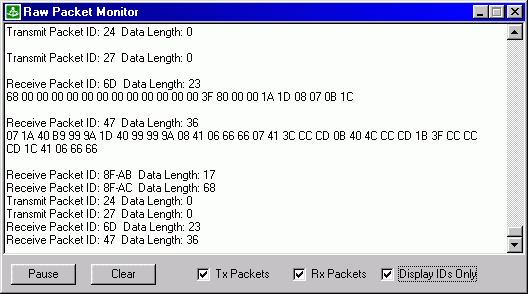
Timing configuration page:
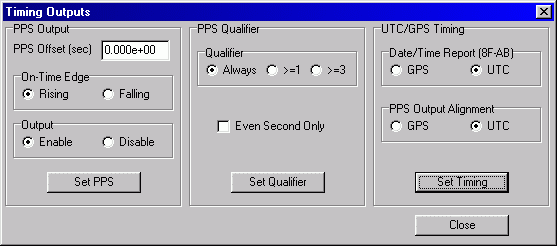
And, even a special diagnostic configuration page for time testing (e.g.,
future leap seconds):
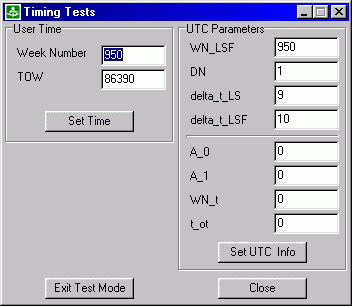
Well-behaved GUI with no valid signal:
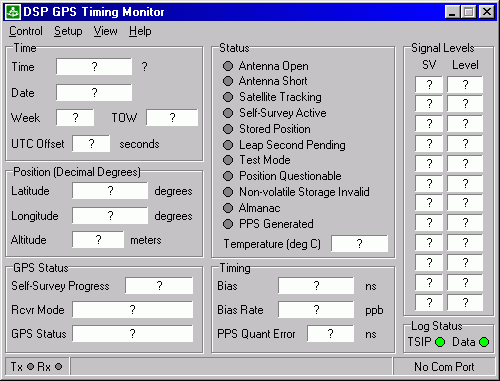
Interesting results on power-up (who else remembers August 22):
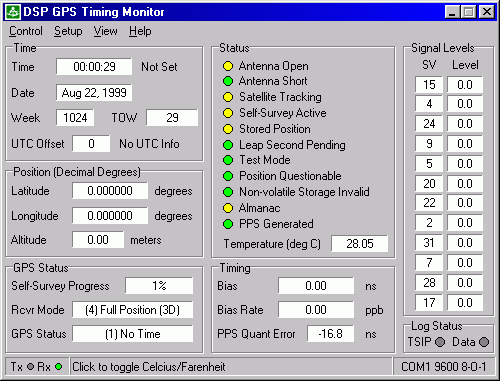
Below is a plot of raw 1PPS measurements against an atomic standard. The
slope is due to the fact that the frequency reference used is off in frequency
by a few parts in 1012th. You can already see the 1PPS jitter is
under 50 ns. You can see that one can resolve parts in 1012th in a
few hours.
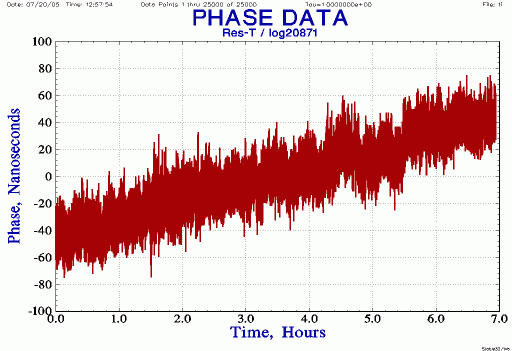
Converting phase to frequency gives this plot:
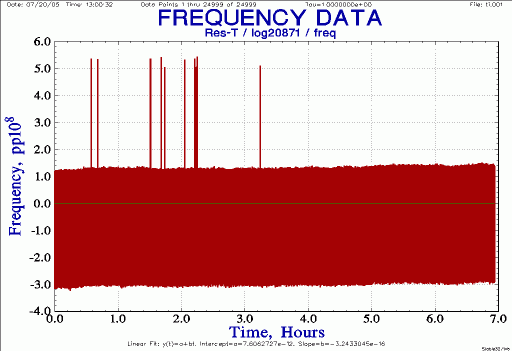
The above shows a few parts in 108th frequency jitter (due to sawtooth). This is not unexpected. However, there were a few frequency data points, with 2x range, that look like an off-by-one error in the receiver internal sawtooth calculation.
Averaging over 5 minutes (300 seconds) gives a short-term frequency stability
down to parts in 1010th.:

With the lab atomic frequency reference offset of 3.53e-12 removed, the
Resolution-T 1PPS performance looks like this at 1Hz:
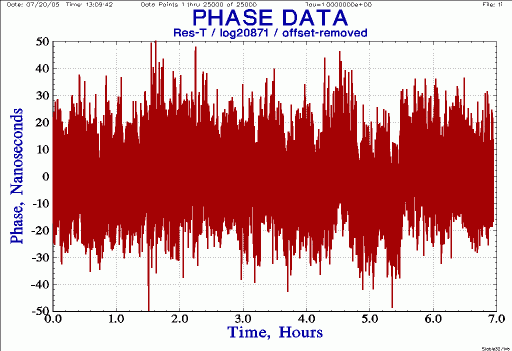
And averaging over 5 minutes (300 seconds) gets it down to this:
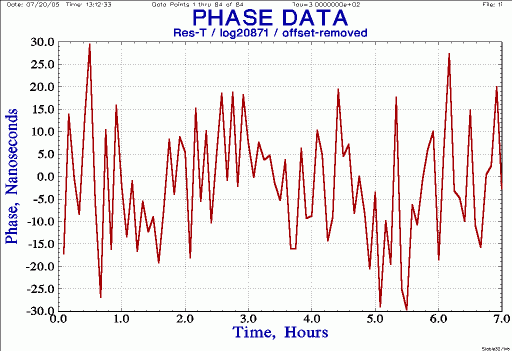
The standard deviation of the 1PPS is about 13 ns.
The Allan Deviation for the Resolution-T, for this limited 25 000 second run
(~7 hours), is:
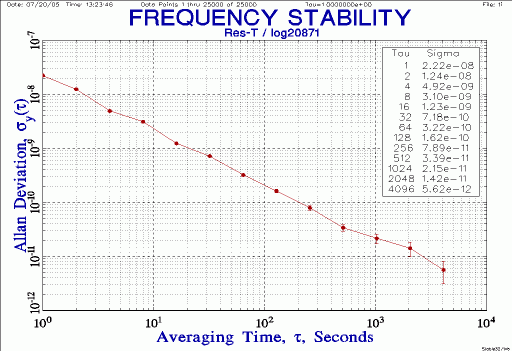
Like the Motorola Oncore the Trimble TSIP protocol includes a command to obtain the so-called negative sawtooth correction. The Trimble GPSmon program includes a feature to parse this command and output an 1 Hz ASCII data file which includes a field for this correction. When the negative sawtooth corrections are added to the TIC readings are more accurate.
Below are two plots, with and without sawtooth correction:
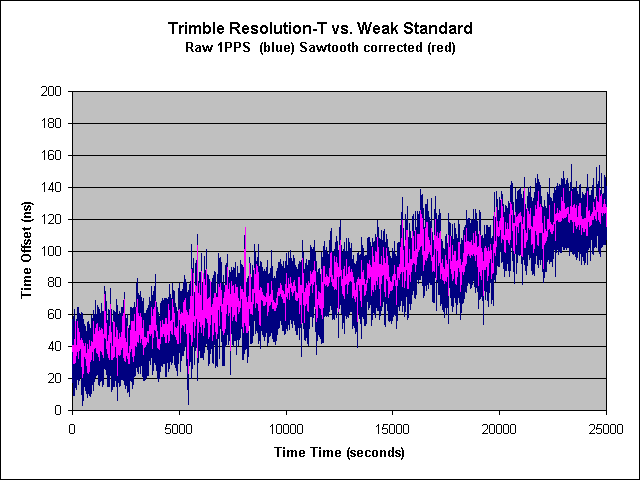
The raw 1PPS has a standard deviation of about 13 ns; with sawtooth correction that drops to about 6 ns.
The Trimble sawtooth looks quite different from the Motorola VP Oncore or M12 sawtooth. There is a high degree of dithering, not the slowly moving effects seen on the Motorola receivers. This is probably an improvement, at least for short-term accuracy. And the Resolution-T should not suffer from the "suspension bridge effect" sometimes seen with the VP or M12.
// plots //
First impressions are quite good. Next we'll do some long-term runs and also look more closely at any sawtooth glitches.